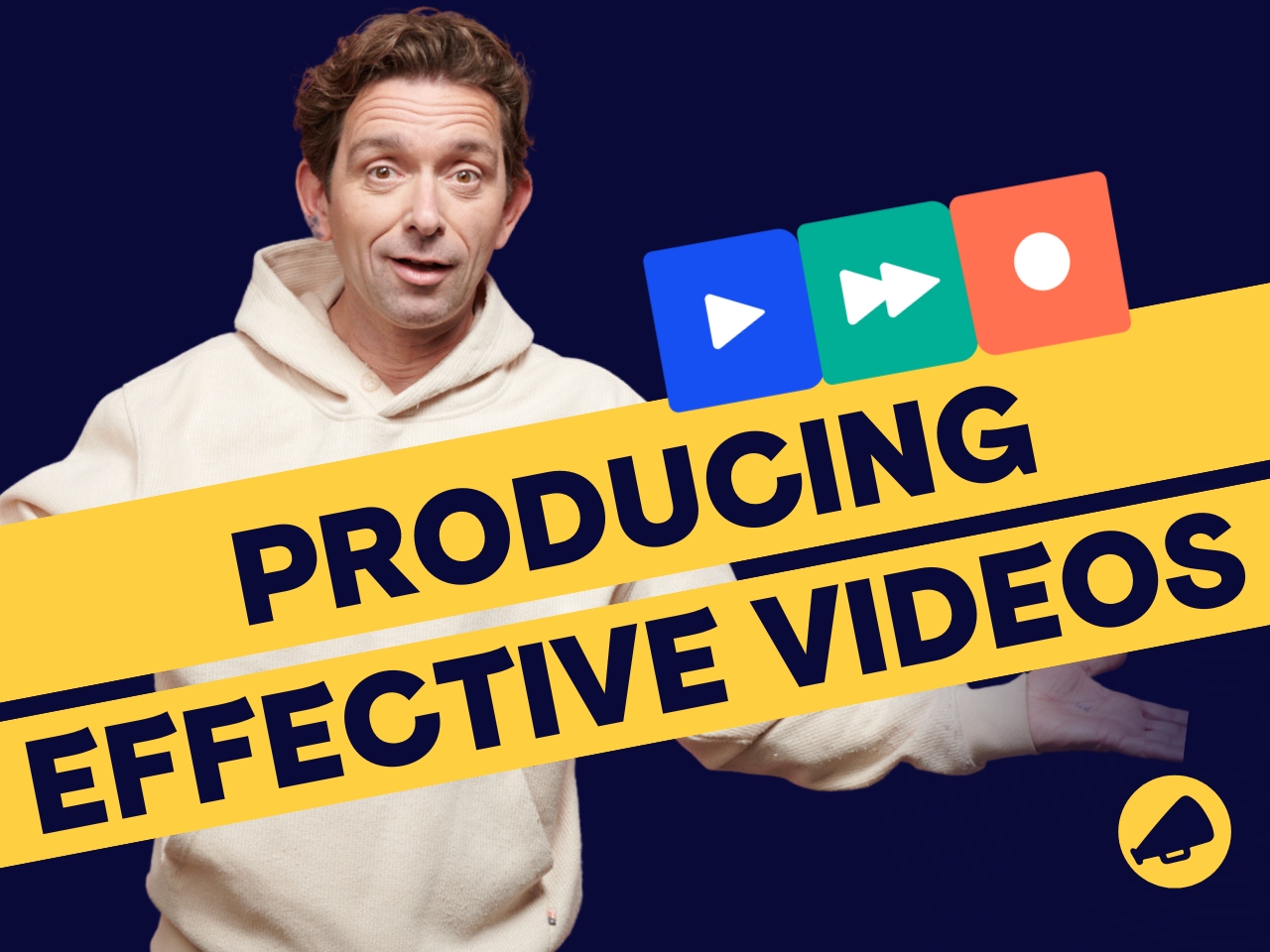Human behaviour is predictable – to a certain extent. We know this thanks to extensive research in the field of consumer psychology. For example, we know that we feel better about ourselves if we’re steadfast (or think we are) as this means that we’re trustworthy, confident and reliable.
If your message fits in with your viewer’s behavioural consistency, you’re already one step ahead of them. In this blog post, you’ll find out more about the power of commitment and consistency, as well as how to apply this in your next web video.
YouTube video: How to create content that sells.
Persuade your viewer
Let’s get one thing straight: because people are used to their thought patterns and behavioural patterns, it can be tricky to convince them otherwise – which is your end goal, if you’re trying to get them to buy your new product or try out your service. The trick is to establish common ground with your viewer first; something that you can both agree on. For example, imagine you’re making a web video advertising a new kind of drinking cup for toddlers.
Don’t start your video off by telling the viewer why your drinking cup is the best on the market; talk about the importance of drinking enough, of raising small children safely. Any father, and especially any mother will agree with you on both fronts. Once you’ve got their attention, you can start telling them all about the advantages of your new drinking cup. Now this scenario fits in with a responsible parent’s behavioural consistency.
Keep your story simple
Did you know that our brains only make up 2% of our body weight, but use up to 25% of our energy? This is why it’s important to use our ‘thinking power’ carefully. As a result, a lot of our decisions are made subconsciously – consistent with our previous thoughts and behaviour.
That’s why you usually take the same route to work, shop in the same places and vote for the same political party – simply because you don’t have the time to think about every single decision you make, especially in today’s complex and busy world. This is why you should avoid using too many facts and figures and keep your story simple.
Start off small
Once you’ve figured out that people like consistency, you can take them on a customer journey, taking baby steps towards your goal. For example: in one neighbourhood, that had many children living in it, a group of residents wanted the other residents to place warning signs in their gardens to encourage passing cars to drive more slowly.
You can probably guess what happened next: most residents didn’t want the warning signs in their garden (not in my back, err, front yard). That’s why the group decided to start off small and had the residents sign a petition and put a small sticker on their car windows first.
A few weeks later, the group returned with the request to place a warning sign in residents’ gardens. Out of the group of residents who didn’t sign the petition and take a sticker first, only 17% placed the sign in their garden. Out of the residents who first signed the petition and placed a sticker on their car window, 76% agreed to place a sign in their garden. The moral of the story?
Start off with a small request first. A good example of this is using the phrase ‘for more information, go to…’ Instead of ‘buy this car’, say ‘how about a test drive?’
Document it
More often than not, our thoughts are just vague ideas floating around in our heads: I want to live healthier, work less, achieve more. However, we usually don’t act out on any of these thoughts. By documenting our thoughts, we can achieve more. I want to stop smoking by this date. I want to lose 10 kilos. I want to sell 20% more. The first step is to write the thought down so that it’s crystal clear.
The next step is to share your newly defined goal with other people. Weight Watchers utilises this principle by having their members share their goals with others online and in Weight Watchers meetings. Sales teams achieve the same by hanging their targets on the wall. Asking a consumer to share something on social media can achieve the same effect.
Consistent and persistent
Sometimes it’s amazing seeing how much people like consistency. Take initiation ceremonies in the army or for students. During these initiation ceremonies, people are humiliated, hurt or can even die. Even so, these rituals still exist.
Researchers have explored the reasoning behind this. It’s apparent that people appreciate something that took hard work and persistence to achieve, more so than something that’s easily achievable. In other words, we feel more loyalty and unity if we have gone through the initiation process first; we feel braver afterwards, more resilient.
This is why the phenomenon still exists today. Now, there’s a big chance that you aren’t in the army, or a member of a student society, but it works in exactly the same way if you want to sell a product.
How many times have people spent all night waiting in line for the latest iPhone? Or have sat at their laptop, anxiously bidding on a pair of exclusive, one-of-a-kind trainers? The more effort you have put into getting something, the better it feels. This is why you should make your product exclusive and one-of-a-kind – it’s what people love.
It’s clear that behavioural consistency is important and helps us in our daily lives, ensuring that we don’t have to think about every single little thing. We’re also firm believers of ‘a promise is a promise’ and act accordingly. Keep this in mind the next time you make a web video, radio ad or e-learning course. It’s a sure-fire way to positively influence people.
About this series
The blog post series ‘Positive influencing’ by Voicebooking explores the psychology behind influencing. The goal is to attract and persuade your readers, viewers and listeners, not manipulate or mislead them.
This series is based on the six fundamental principles of persuasion, as researched and described by Robert Cialdini, Professor Emeritus of Psychology and Marketing at Arizona State University and Stanford University.
More on the topic with the YouTube video link below:




